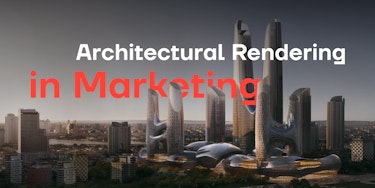Architectural rendering is an essential tool for marketing projects in the construction industry. By providing a visual representation of a building, its features, and its overall aesthetic, it can help architects, real estate developers, and other businesses involved in the construction industry showcase their work to potential clients and investors.
The use of architectural rendering in marketing has become more widespread in recent years due to advancements in technology. With the help of 3D modeling software and other tools, architects can create highly realistic and detailed renderings of buildings that can help potential clients better understand the design and layout of a project.
One of the primary benefits of architectural rendering in marketing is that it helps potential clients visualize the final product before it is built. This can be especially helpful for clients who may have trouble interpreting technical drawings or who want to see how different design elements will work together.
Another benefit of using architectural rendering in marketing is that it allows businesses to showcase their work in a visually compelling way. By providing potential clients with high-quality renderings that showcase the building's features and design, businesses can differentiate themselves from their competitors and create a more memorable marketing campaign.
There are several types of architectural rendering that businesses can use in their marketing efforts, including still images, animations, and virtual reality experiences. Each type of rendering has its own strengths and weaknesses, and businesses should choose the type of rendering that best suits their needs.
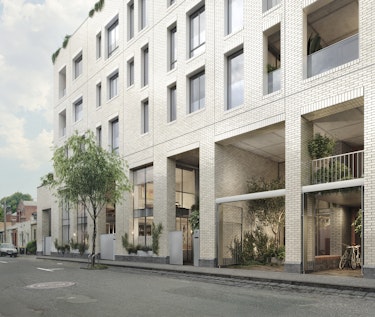
However, not all architectural renderings are created equal. There are certain best practices that should be followed to ensure that a rendering is effective in marketing a project. These best practices include the following:
Use high-quality renderings: High-quality renderings are essential for showcasing a project's design and features accurately. They should be of high resolution, and the colors and lighting should be accurate and realistic.
Showcase the project in context: A rendering should not just show the building in isolation but also in its surroundings. This helps potential clients understand how the project fits into its environment and how it will impact the local community. For instance, if the project is a skyscraper, it would be helpful to showcase it in the context of the city skyline.
Highlight key features: If the project has unique or standout features, make sure to highlight them in the rendering. This could include features like green spaces, unique architectural details, or cutting-edge technology. This helps potential clients understand the value that the project offers.
Keep branding consistent: If the project has a brand identity, make sure that the rendering is consistent with it. This helps create a cohesive marketing campaign and a recognizable visual identity.
Use different angles and perspectives: To provide a more comprehensive understanding of the project, use different angles and perspectives in the rendering. This helps potential clients understand the layout and design of the building, and how different spaces are connected.
Use the rendering in various marketing materials: Architectural renderings should not be limited to just one marketing collateral. They should be used in various materials, including brochures, websites, social media, and advertisements. This helps create a consistent visual identity and a more effective marketing campaign.
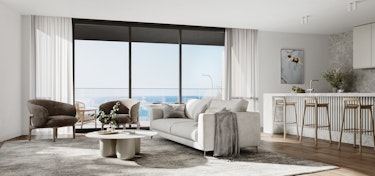
Be transparent: It is essential to ensure that the rendering accurately represents the project and doesn't mislead potential clients. If there are changes to the design or layout of the building, update the rendering accordingly. This helps build trust with potential clients and investors.
These best practices apply to all types of architectural rendering, including still images, animations, and virtual reality experiences. Whether the rendering is used to market a commercial building, a residential property, or a public space, following these best practices can help ensure that the rendering is an effective marketing tool.
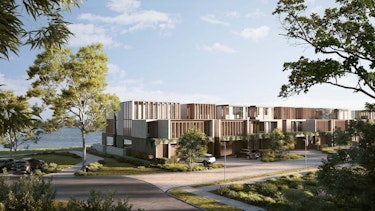
In addition to these best practices, there are certain trends that are currently popular in architectural rendering. These trends can help make renderings more visually appealing and effective in marketing a project. Some of these trends include:
Realistic textures and materials: Using high-quality textures and materials in a rendering can make the project look more realistic and attractive to potential clients. This could include textures like brick, concrete, or wood, and materials like glass or metal.
Environmental context: Including environmental elements like trees, shrubs, and water bodies in the rendering can help make the project look more attractive and sustainable. This is especially important for projects that are designed to be eco-friendly.
Nighttime views: Renderings that showcase a project at night can be visually striking and memorable. This is especially true for projects that include lighting features or that are located in areas with a vibrant nightlife.
People and activity: Including people and activity in the rendering can help potential clients visualize the building in use. This can make the project look more attractive and desirable.
Augmented reality: Augmented reality experiences allow potential clients to interact with a rendering
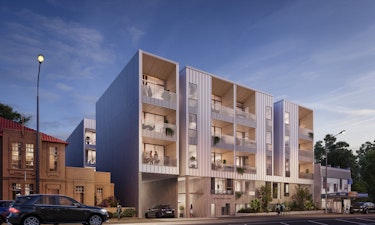
In addition to these best practices, businesses should also consider using certain trends in architectural rendering to make their renderings more visually appealing and effective in marketing a project. Some of these trends include using realistic textures and materials, including environmental context, showcasing nighttime views, including people and activity in the rendering, and using augmented reality experiences.
Overall, architectural rendering is an essential tool for marketing projects in the construction industry. By providing potential clients with a visual representation of a building, businesses can differentiate themselves from their competitors and create a more memorable marketing campaign. However, it is important to follow best practices and consider current trends in order to create the most effective rendering possible.
